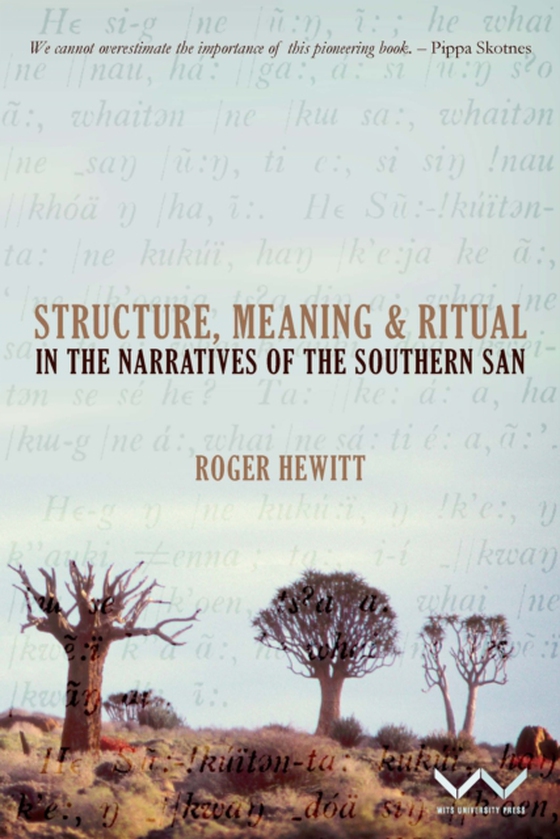
Structure, Meaning and Ritual in the Narratives of the Southern San e-bog
117,05 DKK
(inkl. moms 146,31 DKK)
Structure, Meaning and Ritual in the Narratives of the Southern San analyses texts drawn from the Bleek and Lloyd Archive - arguably one of the most important collections for the understanding of South African cultural heritage and in particular the traditions of the /Xam, South Africa's 'first people'. Initially appearing in a now rare 1986 edition and here re-issued for the first time, the do...
E-bog
117,05 DKK
Forlag
Wits University Press
Udgivet
1 august 2008
Længde
264 sider
Genrer
Anthropology
Sprog
English
Format
pdf
Beskyttelse
LCP
ISBN
9781868147038
Structure, Meaning and Ritual in the Narratives of the Southern San analyses texts drawn from the Bleek and Lloyd Archive - arguably one of the most important collections for the understanding of South African cultural heritage and in particular the traditions of the /Xam, South Africa's 'first people'. Initially appearing in a now rare 1986 edition and here re-issued for the first time, the doctoral thesis on which the book is based became the catalyst for much scholarly research. The book offers an analysis of the entire corpus of /Xam narratives found in the Bleek and Lloyd collection, focusing particularly on the cycle of narratives concerning the trickster /Kaggen (Mantis). These are examined on three levels from the 'deep structures' with resonances in other areas of /Xam culture and supernatural belief, through the recurring patterns of narrative composition apparent across the cycle and finally touching on the observable differences in the performances by the various /Xam collaborators. Hewitt's text remains the only comprehensive and detailed study of /Xam narrative, and it has become itself the object of study by researchers and PhD candidates in South Africa, the United Kingdom, Canada and elsewhere. This new edition at last makes Hewitt's important work more widely available. It will be a welcome addition to the recently burgeoning literature on the place of the /Xam hunter-gatherers in the complex history of South African culture and society.
 Dansk
Dansk

